Filmography 1940s - 1950s
NOTES and FACTSThe Deborah Kerr Fellowship League - A Foundation for the Performing Arts
( Those Neon Lights and Film Journals ) Est., in Brooklyn, N.Y.
Park Slope - 7th St. Prospect Park West
1956
|
 |
|
|
|
|
|
|
|
|
|
|
|
|
|
|
|
|
|
|
 |
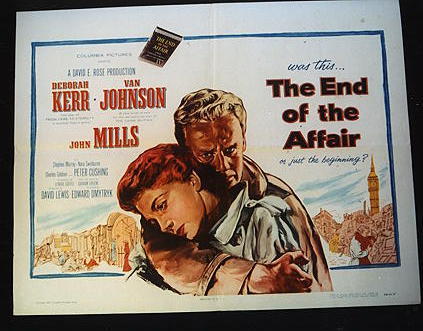
URL:http://www.cinemavii.com/dizozza/haley.html
|
|
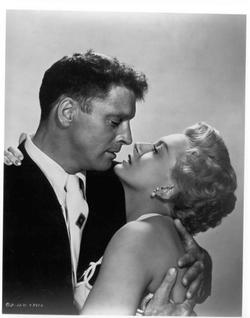
Deborah Kerr, as Karen Holmes, was selected for the part after almost every other top Hollywood name had been reported as seeking it. After more than fifty actresses tested for the envied role of Alma, Prewitt's girlfriend, Columbia contractee Donna Reed won the part. Frank Sinatra's persistence in applying for the off-beat role of private Maggio (to the extent of traveling 27,000 miles from Africa and back for screen test), got him the part of the violent and funny and sour Italian-American. Stage and screen actor Ernest Borgnine, who had recently appeared on Broadway with Helen Hayes in "Mrs. McThing," was signed for the role of Fatso Judson, the sadistic sergent of the stockade. Philip Ober, film actor and a familiar figure on Broadway for more than twenty years, played Captain Holmes, the pompous commanding officer whose infidelity caused his wife - Deborah Kerr - to seek romance with the sergeant - Burt Lancaster. In addition to the wardrobe and weapons, tons of equipment such as generators, cameras, lights, reflectors, cables, sound truck, etc., were shipped several days before the personnel flew out from Hollywood to ensure they would arrive in time for immediate shooting. One of the most exciting action sequences ever filmed by Hollywood cameras was the strafing of Schofield Barracks by Japanese Zeros. This re-creation of a phase of the attack on Oahu, in which the Army installation was riddled by machine gun fire as the Japanese pilots made their bombing run on the Navy ships, was photographed at the locale of the disaster as described by novelist Jones.
A group of planes of the 199th Squadron, Hawaii Air National Guard, bearing the familiar red "meatball" insignia of the Japanese fighters, participated in the simulated attacks and the mock battle scenes featuring Burt Lancaster, the featured players, and the men of the Hawaii Infantry Training Center. The stars of From Here to Eternity played significantly different roles from their accepted screen personalities. Burt Lancaster, a war veteran of three years' service with the famous Fifth Army, played an Army man for the first time in seventeen starring film roles. Despite his Army service, he had to learn to use the outmoded equipment of the pre-Pearl Harbor Army as though he were a recruit. Deborah Kerr completely changed her pace for this part as the captain's wife. Kerr's hair was restyled by Columbia's hairddressing expert Helen Hunt, and the color was changed from her normal ginger red to topaz blonde. She also worked at losing her British accent with a voice coach who specialized in this type of control. Movie audiences, who for the first time saw Miss Kerr in a bathing suit and shorts, found the charming lady's figure a pleasant sight indeed.
Almost thirty years later, the December 11th, 1981 "Rambling Reporter" column of the trade paper THE HOLLYWOOD REPORTER declared that Deborah Kerr's surfside smooch in FROM HERE TO ETERNITY with Burt Lancaster was the most famous love scene in film histry. Deborah remarked, "All I remember is that after a full day's filming of the scene, with all that sand in my bathing suit, my skin was rubbed raw !" ______________________________ Karen Holmes:Come back here, Sergeant. I'll tell you the story; you can take it back to the barracks with you. I'd only been married to Dana two years when I found out he was cheating. And by that time I was pregnant. I thought I had something to hope for. I was almost happy the night the pains began. I remember Dana was going to an officers' conference. I told him to get home early, to bring the doctor with him. And maybe he would have . . . if his 'conference' hadn't been with a hatcheck-girl! He was drunk when he came in at 5 AM. I was lying on the floor. I begged him to go for the doctor, but he fell on the couch and passed out. The baby was born about an hour later. Of course it was dead. It was a boy. But they worked over me at the hospital, they fixed me up fine, they even took my appendix out - they threw that in free. Sgt. Milton Warden: Karen . . . Karen Holmes: And one more thing - no more children. Sure I went out with men after that. And if I'd ever found one that . . . Sgt. Milton Warden: Karen, listen to me, listen. Karen Holmes: I know, until I met you I didn't think it was possible either. ______________________________ * * * (Warden brings papers to Holmes' house for his signature, knowing that only his wife would be there.) Karen Holmes: Are they really important? Sgt. Milton Warden: Yes, but not important that they get signed today. Tomorrow's okay. (she rips them up.) I have copies at the office, so it won't be much work to fix'em up. Karen Holmes: That's what I like about you Sergeant - you have confidence. It's also what I dislike about you. Sgt. Milton Warden: It's not confidence, ma'am; it's honesty. I just hate to see a beautiful woman going all to waste. Karen Holmes: Waste, did you say? There's a subject I might tell you something about. I know several kinds of waste, Sergeant. You're probably not even remotely aware of some of them. Would you like to hear? For instance, what about the house without a child? There's one sort for you. Then there's another . . .
You're doing fine, Sergeant. My husband's off somewhere, and it's raining outside, and we're both drinking now. You've probably only got one thing wrong. The lady herself. The lady's not what she seems. She's a . . . washout, if you know what I mean . . . and I'm sure you know what I mean! Sgt. Milton Warden: You going to cry? Karen Holmes: Not if I can help it. What are you doing? Sgt. Milton Warden: I'm leaving. Isn't that what you want? Karen Holmes: I don't know, Sergeant. I don't know.
(He kisses her). ______________________________ * * * Karen Holmes: Don't try to be gallant, Sergent. if you think this is a mistake, come right out and say so . . .
Well, I guess it's about time for me to be heading home, isn't it? . . .
Well, isn't it? Sgt. Milton Warden: What's the matter? What started all this, anyway? You think I'd be here if i thought it was a mistake? Taking a chance on 20 years in leavenworth for making dates with the company commander's wife? And her acting like - like Lady Astor's horse, and all because I got here on time! Karen Holmes: Well, on the other hand, I've got a bathing suit under my dress . . . Sgt. Milton Warden: Me too! ___________________ THAT FAMOUSE ROMPING BEACH-SCENE . . . AND THEN . . . ____________________ Karen Holmes: I never knew it could be like this! Nobody ever kissed me the way you do. Sgt. Milton Warden: Nobody? Karen Holmes: No, nobody. Sgt. Milton Warden: Not even one? Out of all the men you've been kissed by? Karen Holmes:
(giggling) Now that'd take some figuring. How many men do you think there've been? Sgt. Milton Warden: I wouldn't know. Can't you give me a rough estimate? Karen Holmes: Not without an adding machine. Do you have the adding machine with you? Sgt. Milton Warden: I forgot to bring it. ________________________________
|
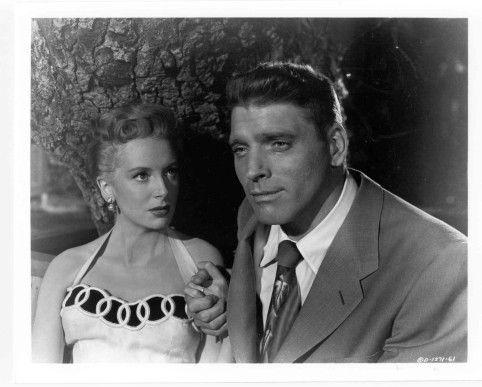
Schofield Barracks under attack in 1953's Best Picture, From Here to Eternity. According to Kaylie Jones in an interview, the daughter of From Here to Eternity author James Jones, the soldiers were having breakfast and eagerly awaiting their extra rations of milk - a Sunday morning treat at Schofield - when the Japanese struck. Burt Lancaster, as Sgt. Milton Warden, sprang into action, manning a machine gun atop the Barracks and firing at the attacking Zeros. Eternity was shot on location at Schofield, where novelist James Jones was actually based in 1941. However, Jones bunked at D Quad, while director Fred Zinnemann's crew shot at C Quad, which is more open and has better light and aesthetics (e.g., palms). (There is a dispute as to whether or not the Japanese actually bombed and strafed Schofield Barracks. What is now Wheeler Air force Base,adjacent to Schofield, was a prime target, because the Japanese wanted to knock out the U.S. planes based there. Some contend that Schofield was hit by accidental fire aimed at Wheeler). From Here to Eternity (1953), about the peacetime Army on Oahu and culminating with the Japanese suprise attack, is one of only two Pacific movies to win Academy Awards for Best Picture (the other film is Mutiny on the Bounty [1935]). Eternity won a number of additional oscars, including Fred Zinnemann for directing, Daniel Taradash for screenwriting, and Burnett Guffey for cinematography. Burt Lancaster, Montgomery Clift, and Deborah Kerr all received best acting nominations, while Donna Reed (as a hooker!) and Frank Sinatra won Best Supporting Actor/Actress Oscars. (James Jones' daughter Kaylie Jones [in an interview] claims that rumors of Sinatra winning his big comeback role via the help of gangster connections are unfounded. Sinatra, whose career was then in decline, lobbied actively for the part as Private Maggio, the Italian-American from New York, a role that Hoboken-born Sinatra knew he could play convincingly, which he amply proved in screen tests and in an Academy Award-winning performance of a lifetime). Ernest Borgnine plays the sadistic stockade sergeant, fatso Judson; Burt Lancaster is Sgt. Milton Warden; and Frank Sinatra is Private Angelo Maggio. The fight scenes take place at Choy's, a Chinese restaurant that is supposed to be Kemoo Farm, which was directly across from a main gate at Schofield Barracks. Although Eternity's exterior shots were filmed on location at Schofield and on Oahu, fight sequences were shot in a Hollywood studio, as were many of the film's interiors.
|
|

|
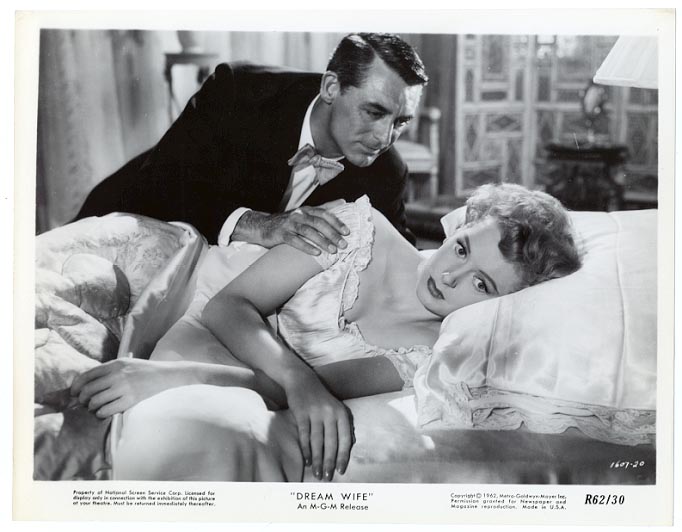
"M-G-M's 'Dream Wife' is the funniest Cary Grant film since 'The Batchelor and the Bobby-Soxer'!" This is where Cary Grant and Deborah Kerr first displayed the chemistry that worked so memorably in the classic AN AFFAIR TO REMEMBER. This silly, wonderful film is tailor-made for Deborah and Cary - they are marvelous to watch in DREAM WIFE.
Cary dumps workahlic Deborah for simplistic, adoring, "old fashioned" type of wife imported from the orient. However, before the wedding Deborah starts to educate the meek one. Some fun . . . you'll enjoy it.
The film received an Oscar nominatin for the elaborate oriental costuming and Deborah's constantly changing fashion statements.
|
|

PHOTOPLAY: "A good picture, quick and to the point." - THE HUCKSTERS -US 1947/115m/bw - MGM (Arthur Hornblow Jnr.) Back from the war, an advertising executive finds it difficult to pur up with his clients' tantrums. Good topical entertainment which still entertains and gives a good impression of its period. w Luther Davis, novel Frederic Wakeman d Jack Conway ph Harold Rosson m Lennie Hayton. CAST: Clark Gable + Deborah Kerr, Ava Gardner, Sidney Greenstreet, Adolphe Menjou, Keenan Wynn, Edward Arnold, and Aubrey Mather another small synopsis . . . As Victor Norman, Clark Gable plays a returning World War II vet looking for a job with an advertising agency. He succeeds, landing a good position with a nice salary, but soon finds out that ethics and integrity are in short supply in the rarefield world of corporate advertising. With a big soap account on the brink of leaving the ad agency, things get a bit desperate as the agency struggles to hang onto the company's business. They round up a war widow for an endorsement, and their client is temporarily happy, but soon Gable finds the man to be a harsh and demanding taskmaster. This acerbic comedy may seem a little thin by today's standards, but some of the commentary on the gullibility of the American buying public is still pretty fresh half a century later. Sydney Greenstreet excels as the tyrannical, somewhat disgusting head of the soap firm, and Deborah Kerr makes her American screen debut as Gable's war-widow love interest.
|

URL:http://www.bmonster.com/cult33.html
|
|
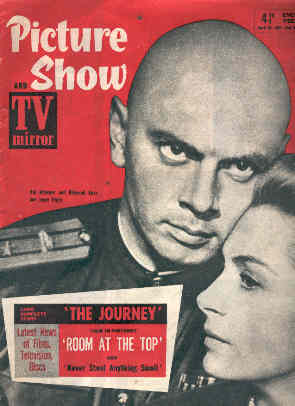
THE KING AND I Produced by Wilder's collaborator Charles Brackett, written by Ernest Lehman from Rodgers and Hammerstein's stage hit, and choreographed by Jerome Robbins, The King and I boasts an impressive set of credentials, let down only by Lang's emphasis on size rather than style. But Yul Brynner gives an outstanding display of regal insecurity and Deborah Kerr is well cast as Anna who tries to bring Victorian domesticity to the barbarian court of Siam. U.S.A. 1956/Dir Walter Lang. With Rita Moreno as TupTim Yul Brynner had an interesting role in "The Journey" ('59), which purported to be on the side of the 1956 Hungarian revolt against Soviet domination. THE JOURNEY was shot and edited in such a way that it could, with a few changes, be shown on either side of the Iron Curtain. Brynner's role was that of a Soviet officer who suspects Soviet culture is more primitive than that of the West; falls for a British aristocrat (Deborah Kerr); and lets her, her lover, and other refugees escape. Brynner's performance is interesting because one can tell, from the way he speaks the lines, he was personally aware of the implications of the film's politics, and of the hazards of the political tight-rope director Anatole Litvak had chosen to walk. The only good role Mr. Brynner has had since THE JOURNEY is that of the leader in THE MAGNIFICENT SEVEN. Also note this: photography is Brynner's major hobby ( he was the official on-set still photographer on THE KING AND I; he shot hundreds of stills on THE TEN COMMANDMENTS and GOODBYE AGAIN ). With massive talent both in front of and behind the camera, "LUST FOR LIFE" was nominated for Academy Awards in several categories. Kirk Douglas received his third nomination for Best Actor in LUST FOR LIFE, but Yul Brynner took the award for "THE KING AND I" in 1956. Kirk Douglas' costar, the late Anthony Quinn, won the award for Best Supporting Actor for his portrayal of Paul Gauguin.
|
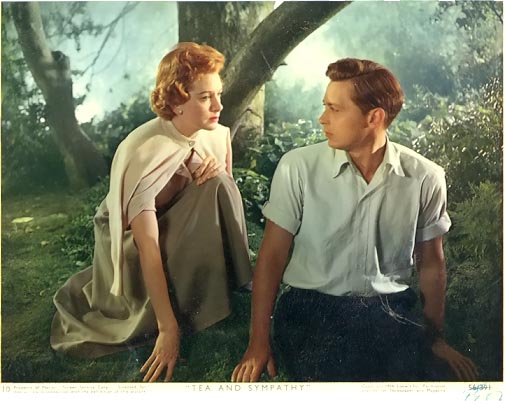
|
|
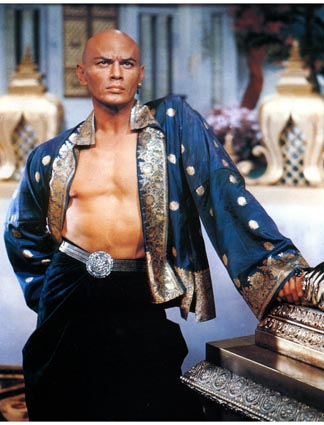 1956
1956
best actor
Yul Brynner
THE KING AND IAs the Siamese ruler who wanted to be a modern monarch yet retain his ancient privileges, Yul Brynner - bald/pated, bare-chested, exuding magnetic sex appeal and arrogance - came on screen with dyamic impact in The King and I.
It was inevitable that the Academy should dub him Best Actor for that virtuoso performance. The picture itself, and Deborah Kerr, as its English governess to the King's children, also won nominations.
Brynner had been seen in two other fine performances that year, in Anastasia and The Ten Commandments. Before then, his only other movie had been a minor gangster fim some seven years earlier, in which he had hair.
The star who found self-imposed baldness such an asset has told more than one story about his origins, the most frequent being that he was born on Sakhalin Island, off the coast of Siberia, on July, 1920, of a mixed marriage.
A circus acrobat before going on the stage in Paris after a fall from the high trapeze ended his circus days at the age of 19, the exotic-looking Brynner came to the United States in 1941 with a small Parisian repertory theatre.
During the war years, he put his fluent french and Russian to work for the Office of War Information's Voice of America.
After a post-war appearance in 1945 on Broadway, with Mary Martin in Lute Song, Brynner went into Television, as an actor at first, then a director.
He was happy helming CBS's Danger and Studio One, when he was lured back to Broadway to co-star with the late, great Gertrude Lawrence in the Rodgers-Hammerstein musical, The King and I, for a three-year run.
Much concerned about the welfare of his fellow man, Brynner devotes much of his time to the U.N. World Organization in his capacity as a Special consultant, a volunteer job that takes him all over the world. His screen credits include:
The Sound and the Fury
The Magnificent Seven
Morituri
Cast a Giant Shadow
The Double Man
Triple Cross
The Madwoman of Chaillot ________________________________________
***************************************************
Paramount Pictures presents
"THUNDER IN THE EAST" - 1953
Produced by Everett Riskin; Directed by Charles Vidor;
Screenplay by Jo Swerling; Music by Hugo Friedhofer
Adaptation by George Tabori and Frederick Hazlitt Brennan
Based in the novel RAGE OF THE VULTURE by Alan Moorehead
CAST
Alan Ladd ................ Steve Gibbs
Deborah Kerr ................ Joan Willoughby
Charles Boyer ................ Ram Singh
Corinne Calvet ................ Lizette Damon
|
|
|
|
|
|
|
|
|
|
|
|
|
|
|
|
|
|
|
|
|
|
|
|
|
|
|
|
|
|
|
|
|
|
|
|
|
|
|
|
|
|